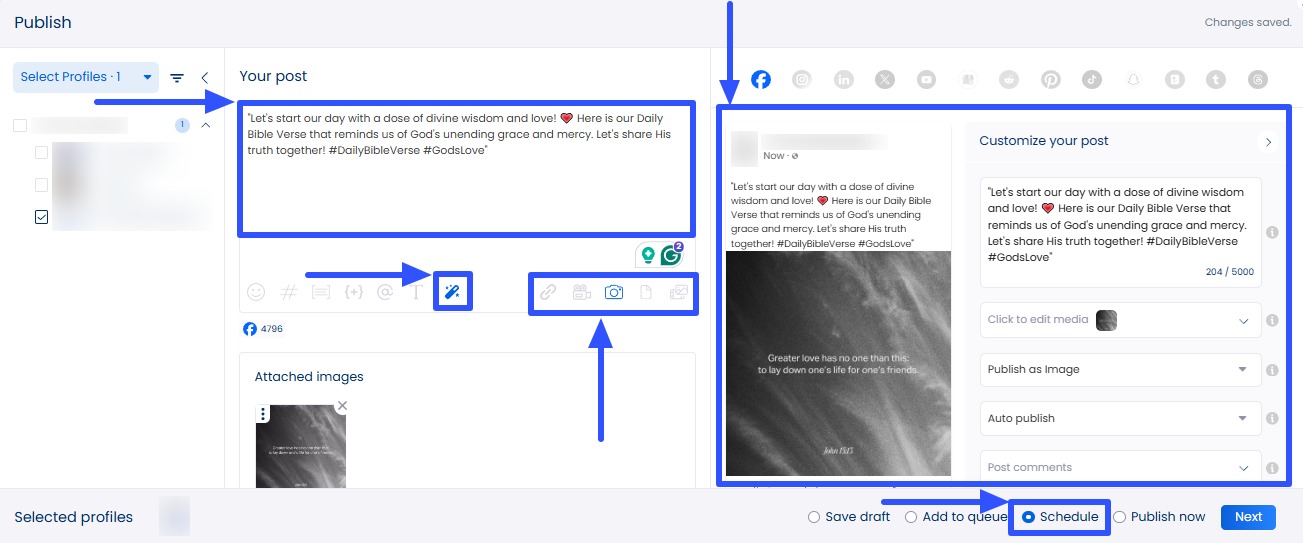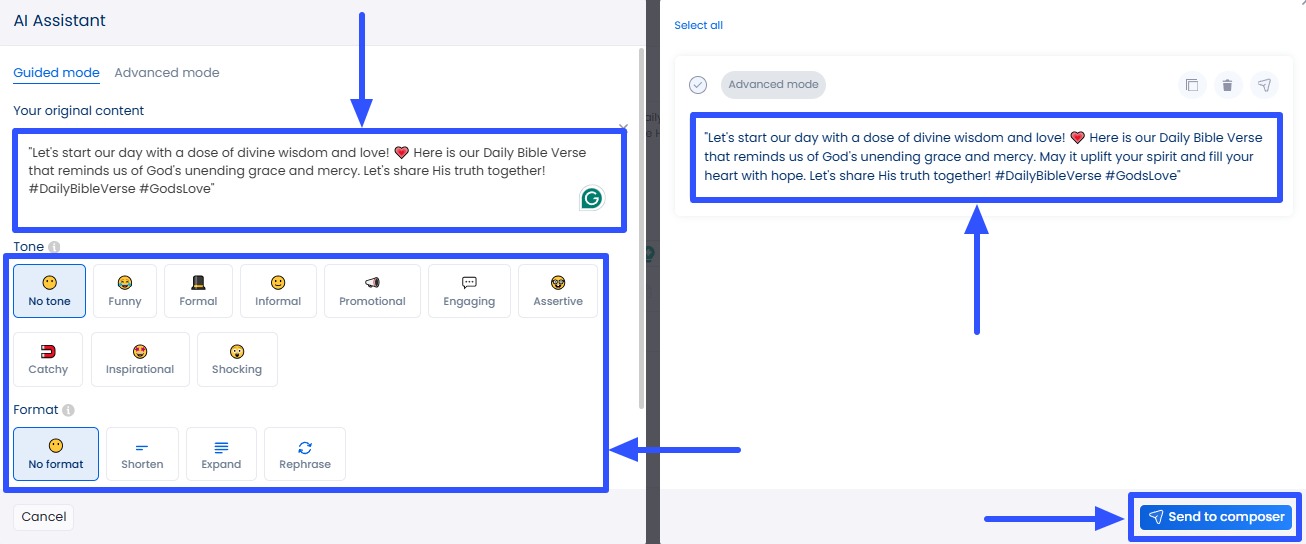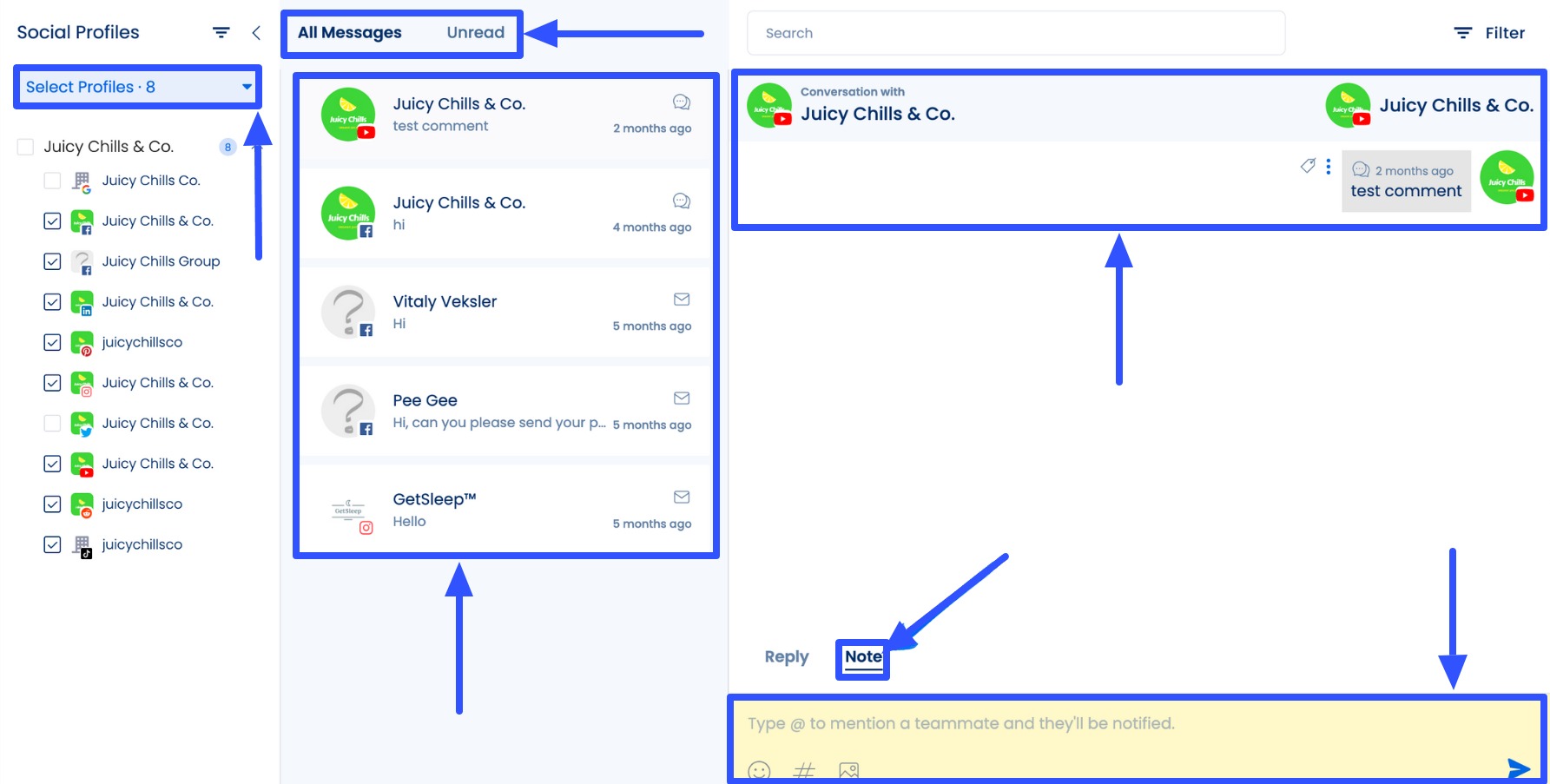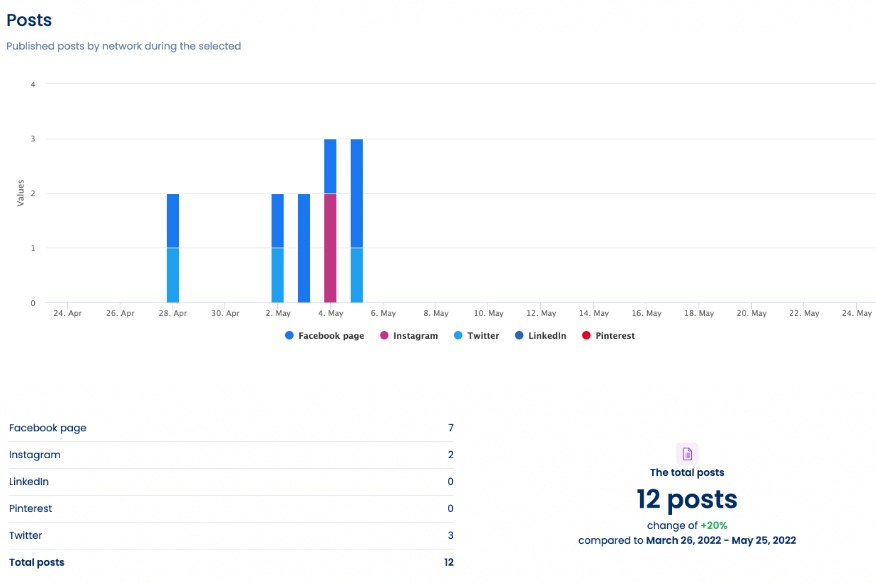To achieve next-level success for a church’s social media, you need a church social media team structure.
Managing your clients’ church social media involves creating content, tracking engagement, and analyzing data.
It’s all too much for one person to handle.
That is why having a strong team structure is crucial to ensure the right people handle crucial tasks, leading to efficient and effective social media management.
So, how do you help clients build their social media dream teams?
This guide can help by diving into the tried and tested tips for creating a winning social media team.
What you will learn
- What is a church social media team structure?
- Why is creating a church social media team structure important?
- What are the best practices for creating a church social media team structure?
- How Vista Social can help church social media teams?
- Ready to start developing a church social media team structure?
What is a church social media team structure?
A church social media team structure is a well-developed and organized framework outlining the roles, responsibilities, and workflows of managing a church’s presence across social networks.
The structure ensures that specific team members cover all aspects of your clients’ social media efforts, from post scheduling to analytics.
[Must read: A Guide to Church Social Media Management in 2024]
Why is creating a church social media team structure important?
Developing a church social media team structure for your clients is crucial for several reasons.
- Efficiency. A clear team structure allows your clients to distribute tasks among team members. It makes their social media management workflows more efficient and prevents burnout
- Consistency. A structured team ensures everyone is on the same page, keeping your clients’ messaging on-brand and aligned with their church’s mission across all social media posts.
- Seamless collaboration. Knowing who will do what fosters idea-sharing and collaboration, resulting in more creative, authentic, and engaging content
- Accountability. Clearly assigned roles make tracking the progress and measuring the success of your clients’ social media efforts easier. Social media platforms like Vista Social can help with its team collaboration features
What are the best practices for creating a church social media team structure?
Build a clear church social media team structure for your clients with these tried and true tips.
1. Assess needs
The first step in creating your clients’ church social media teams is to assess their needs.
What are their social media goals, and what are the specific tasks necessary to achieve them?
Answering these questions helps you determine the roles required to cover critical tasks, from content strategy development and planning to engagement management.
Consider breaking down your clients’ goals into specific tasks that must be accomplished.
For instance, if your client prioritizes boosting engagement, their social media team structure must include content creators and engagement or community managers.
2. Determine clear roles
Establish specific roles within the social media teams in your clients’ churches to build a well-organized structure.
Determine key positions such as:
- Content creators who are in charge of producing engaging social media posts
- Community or engagement managers who will handle follower and audience interactions and inquiries
- Data analysts who will track your clients’ social media performance metrics and uncover actionable insights
Clear roles ensure that each team member knows their responsibilities and contribution to the overall social media strategy.
It also prevents confusion and overlaps across tasks, reducing bottlenecks in the social media teams’ workflows.
Tasks like approving and reviewing posts are easy with a clear social media team structure.
With Vista Social, you can create automated post approval workflows and add the users, such as content managers and your clients, who will approve the content.
[Must read: Create Your Social Media Marketing Workflow: w/ Tips & Steps]
3. Assign team members
Creating an effective church social media team involves choosing the right people for each role.
Consider each potential team member’s passion and unique skills.
Do they have a knack for telling engaging stories or communicating effectively with members of your clients’ church communities?
People with these unique skills can be excellent social media content creators and engagement managers.
Those with strong analytical skills can be effective data analysts and help elevate your clients’ social media performances.
If you use Vista Social, you can easily work with clients and team members on social media content and campaigns with the platform’s team management tools.
4. Document all guidelines and processes
Besides people and their roles, a social media team structure should include the processes and best practices to guide your clients’ strategy implementation.
Create a library of resources necessary for your clients’ church social media team to carry out their roles and responsibilities effectively.
The detailed resources can include the following:
- Content creation guidelines, including the tone and voice, themes, content types, style guides, and approval processes
[Must read: Social Media Style Guide for Social Media Marketers this 2024]
- Social media posting schedule, including optimal publishing times and frequencies for maximum engagement. Vista Social’s suggested optimal posting times based on engagement data make this a breeze
- Engagement and community standards, including interaction guidelines, response protocols, and how to address negative feedback or messages
- Communication and collaboration processes, such as regular meeting schedules and feedback loops
- Crisis management plans, including emergency protocols during social media hacks and escalation procedures specifying point persons and church leaders
5. Simplify where you can
A church social media team structure doesn’t have to be complex to be effective.
Simplify where you can, from team members’ roles to the number of social media tools.
For example, if your clients have small teams, focus on the most essential roles to keep their social media team structures lean without sacrificing functionality.
Also, keep the number of social media tools to a minimum and leverage automation features to streamline repetitive and tedious tasks like post publishing.
How Vista Social can help church social media teams
Vista Social offers crucial and advanced features to help your clients’ social teams implement their campaigns and content strategies efficeintly.
The platform’s social media publishing feature lets you and your clients’ teams create and auto-publish posts on an optimal schedule.

The Publisher includes an AI Assistant that can write and refine post descriptions and taglines using ChatGPT technology.

Managing follower and audience interactions is hassle-free with the platform’s social media engagement feature.
You can easily sort, manage, and reply to all your clients’ Direct Messages (DMs), comments, and mentions from one Social Inbox.
You can also leave notes on conversations for specific team members to ensure all engagements are handled promptly.

Another awesome feature is the platform’s social media analytics tools.
The tools simplify tracking, measuring, and generating and scheduling reports on your clients’ content performance.

Vista Social offers more handy social media management features, including hashtag tools, a content calendar, link in bio tool, and more.
[Must read: Maximize Your Agency’s Potential with Social Media Calendar Tools]
Ready to start developing a church social media team structure?
Building your client’s church social media team structure doesn’t have to be complicated.
Learn from time-tested tips to set your clients’ church social media teams for success.
Use a robust social media management platform like Vista Social to turbocharge team workflows.
